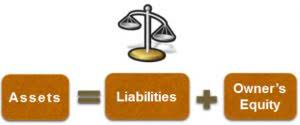
Each also provides the assertion meaning or definition to help one understand how each is used in an assessment. This assertion may also be categorized as an understandability assertion. This assertion confirms the company has all usage rights to recognized assets. For liabilities, it is an assertion that all liabilities listed on a financial statement belong to the company and not a third party.
Limitations of Audit of Financial Statements
While audit assertions apply to the balance sheet and income statement, they may have a wider scope. The existence assertion is that any assets and liabilities recorded in the financial statements actually exist. Similarly, it includes a claim that there is no overstatement in reporting these items.
Rights and obligations
The risk assessment for valuation, existence, rights and obligations, completeness, and all other assertions are high. Logically, the substantive procedures must now address ledger account all of these (high) risks. An external audit is a process where independent auditors examine a company’s financial statements. Based on their examination, they conclude whether those statements are free from material misstatements.

Why are audit assertions important?

Lastly, the assertion of valuation is made to ensure that all assets, liabilities, and equity has been valued appropriately. Basically, it ensures that the represented transactions in the Financial Statements include transactions that are only relevant to the current financial year. However, it is important to ensure that all the salaries and wages are of the authorized personnel. There should be no unauthorized payroll expenses included in the wages and salaries.
- This assertion usually applies to any transactions and events that occur close to the year-end.
- In the warehouse those entries are vouched to the tangible inventory-support for existence.
- So knowing the risk of material misstatement at the assertion level is critical.
- It is the third assertion type that can fall under both transaction-level assertions and account balance assertions.
- Items in the balance sheet have been appropriately evaluated and allocated to reflect their actual economic value.
- Auditors can gather evidence by using various audit procedures such as examining various records and supporting documents.
- In this case, we perform test of controls to obtain audit evidence to support our assessment that we believe the internal controls can reduce the risk of material misstatement in expense accounts.
- The risk that we usually have with the expense accounts is the material understatement of expenses.
- Classification – means that assets, liabilities and equity interests are recorded in the proper accounts.
- For auditors, it is crucial to ensure amounts recorded in the financial statements are accurate.
- However, they may not show a true and fair view of the company’s standing.
It confirms that all have been classified correctly and presented clearly in such a manner that helps understand the information contained in the financial statements. It refers to the presentation of all the transactions and the disclosure of all the events in the financial statements and confirms that they have occurred and are related to the entity. Candidates must be able to link relevant procedures to the specific assertion required.
Audit Assertions:

In summary, it is important for auditors to be aware of what types of audit procedures are suitable for testing different audit assertions. This may also depend on different levels of assessed risks and quality of audit evidence that auditors seek to obtain. For account balances, these assertions differ from transactions management assertions and events. Usually, these assertions impact the balance sheet and the income statement. Audit assertions allow auditors to assess the various financial reports effectively. They will also not provide any structured approach for auditors to evaluate financial statements if they lack these assertions.

All transactions that were supposed to be recorded have been recognized in the financial statements. It is about the fact that all the transactions which were supposed to be recognized have been recorded in the financial statements entirely and comprehensively. Since financial statements cannot be held to a lie detector test to determine whether they are factual or not, other methods must be used to establish the truth of the financial statements. Classification – means that assets, liabilities and QuickBooks Accountant equity interests are recorded in the proper accounts. Cut–off – that transactions are recorded in the correct accounting period.

